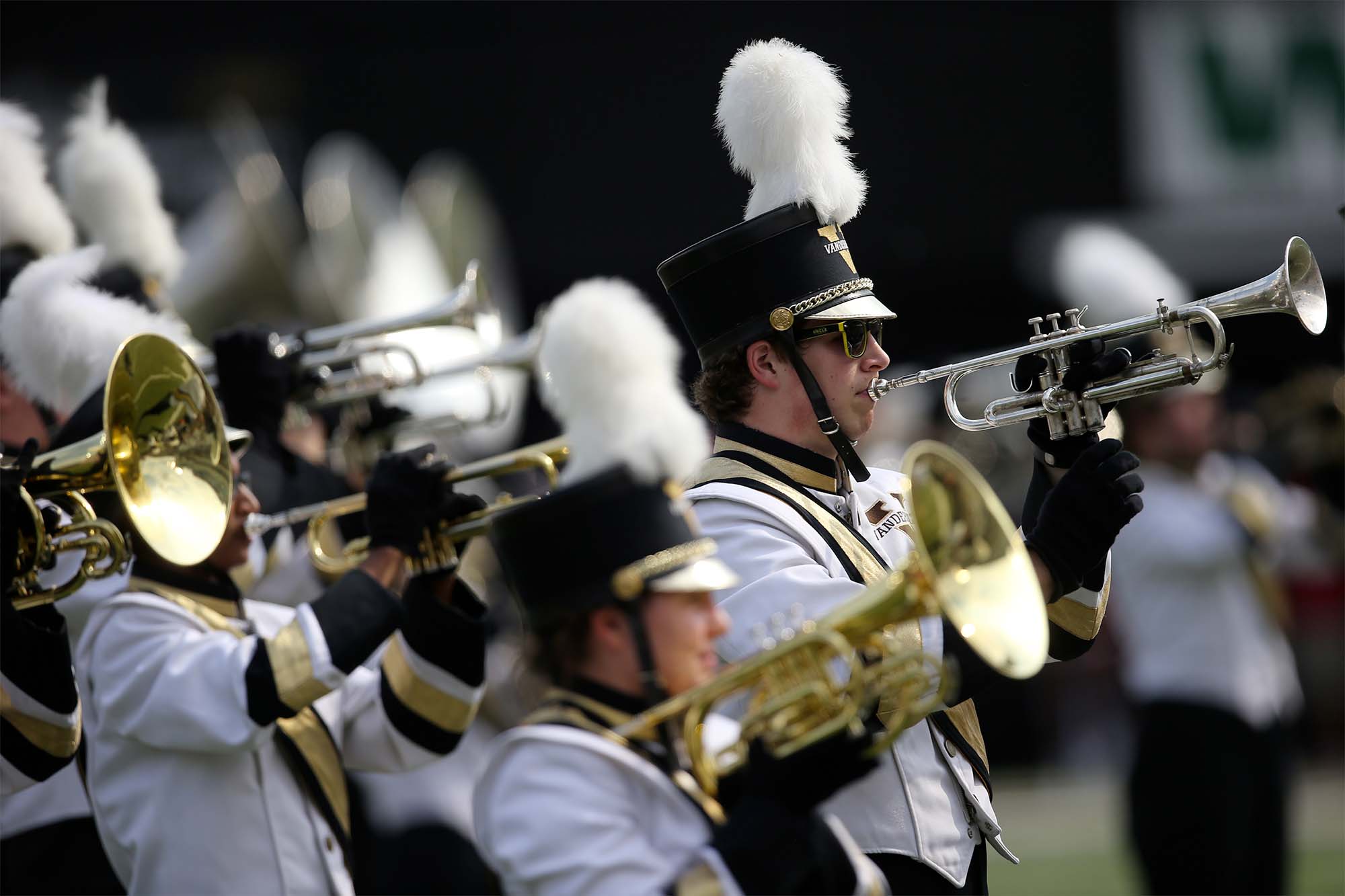School songs can form the core soundtrack of a student’s college experience. At Vanderbilt that musical history parallels the history of the institution.
The first song specifically written for Vanderbilt debuted in 1879, four years after the university opened its doors. The “Vanderbilt University Grand March” was published by James A. McClure, followed by the “Vanderbilt University March” in 1895 and the “Phi-Delta Theta Two-Step” in 1896. However, the 1889 Commodore yearbook notes a song titled “Vanderbilt,” words by William Rice Sims (ThG 1880, BA 1884, PhD 1888) and music by A. Oscar Browne, that sang the praises of Cornelius Vanderbilt and Bishop McTyeire.
“O Alma Mater, Autumn Ode to Vanderbilt,” was composed in 1900 for Vanderbilt’s 25th anniversary. The words were written by Olin Wannamaker, who received his master of arts degree that year. The music was written by Emma L. Ashford, wife of John Ashford, an engineer from Bath, England, who became Vanderbilt’s superintendent of buildings and grounds in 1884. It was possibly the first of as many as seven Vanderbilt titles for which Ashford composed the music.
However, Ashford’s composition is not Vanderbilt’s official alma mater. That song, which opens with “On the city’s western border,” was written by Robert F. Vaughan in 1909. Vaughan, BA 1907, LLB 1909, was president of the Vanderbilt Glee Club and wrote the lyrics at the suggestion of its director, Charles Washburn, to the tune of the song “Amici,” according to the January 1923 issue of the Alumnus. The tune is actually “Annie Lisle,” an 1857 ballad by songwriter H.S. Thompson.
Vanderbilt’s alma mater, aside from being played at Commencement and Reunion, is tied into the athletic fans’ experience of football and basketball games. While most students do not know all the words, everyone knows at least three. “The Third Down Cheer,” as it is sometimes called, is the first line of the second stanza of the alma mater played instrumentally followed by the next lyric—“CONQUER AND PREVAIL”—yelled loudly.
Vanderbilt’s most famous fight song is “Dynamite,” written by Francis Craig, BA 1924. Craig, who was a well-known band leader in the 1930s and ’40s, was responsible for launching the careers of Dinah Shore, BA’38, Snooky Lanson and Phil Harris. Francis Craig wrote “Dynamite” in the week of the Nov. 12, 1938, Vanderbilt-Tennessee game, and he and his orchestra played the song on a national hook-up the night before the game. At halftime the next day, Craig himself directed the Vanderbilt band in the local premiere of the song.
Throughout the 1940s and early 1950s, the song gradually gained in popularity. According to Carrie Tipton, Vanderbilt musicology faculty and expert in university fight songs, several inflection points helped contribute to the song’s popularity and ultimately led to it being known as the university’s primary fight song. In 1941, “Dynamite” was published by Edwin Morris and began receiving a surge of radio exposure due to ASCAP licensing issues that prevented other Vanderbilt songs of the time to be played on the radio. Furthermore, as university administration began to dedicate more resources to its band program—including hiring the school’s first full-time band director, James H. Parnell, in 1952—the song’s popularity grew, and it became cemented as Vanderbilt’s main fight song.
While “Dynamite” is still Vanderbilt’s primary fight song, there are two others: “Cheer for Old Vandy,” written in 1953 by Class of 1924 alumnus Joe Landess as a gift to Vanderbilt upon his son Tom’s graduation, and the more recent “Spirit of Gold” composed by the former assistant director of bands, Joe Laird.
Learn more about the history of Vanderbilt’s and other university’s fight songs by checking out Tipton’s new book, From Dixie to Rocky Top: Music and Meaning in Southeastern Conference Football, available through Vanderbilt University Press.
